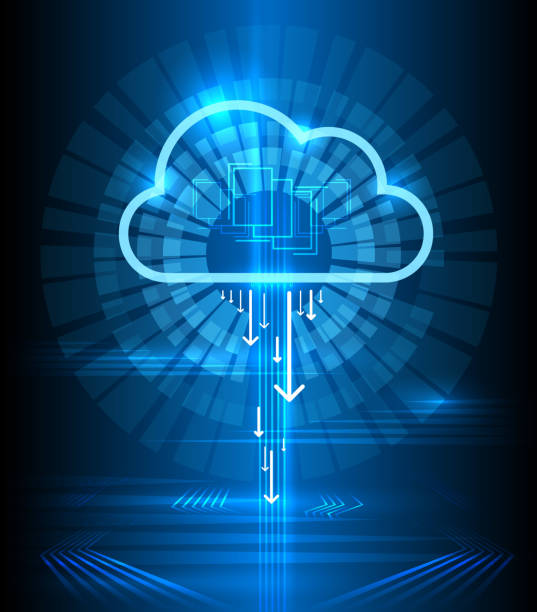Cloud Computing is a technology model that provides on-demand access to a shared pool of configurable computing resources like servers, storage, networks, etc. It allows users to access and use computing resources over the internet without needing to own or maintain the underlying physical infrastructure.
Cloud Computing has come a long way over the last few decades. The term Cloud Computing was only coined in the early 2000s. Here is a glimpse of Cloud Computing Evolution:-
1950s and 1960s –
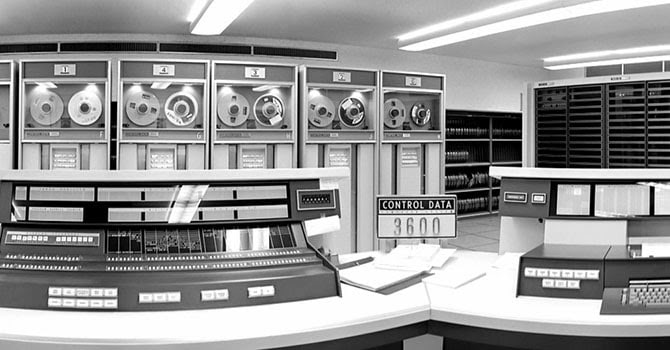
During this time period, the computing landscape was dominated by mainframes and early networks. Here are some key aspects of computing during that period:
- Mainframes and Centralized Computing: Mainframe computers were the primary computing platforms during this time. These large and powerful machines were centralized and typically housed in dedicated data centers. Mainframes were capable of processing large volumes of data and supporting multiple users concurrently.
- Punch Cards: Input to computers was often done using punch cards. Users would create stacks of punch cards with their programs or data, and these cards would be fed into the computer in batches for processing. This batch-processing approach was a precursor to later computing models.
- Limited User Access: Computing was primarily the domain of scientists, researchers, and large organizations due to the high cost and complexity of the technology. Users typically had scheduled time slots to access the mainframe.
- Limited Networking: Computer systems were not interconnected in the way we understand networks today. Most computers operated as standalone units at the time.
1970s and 1980s –
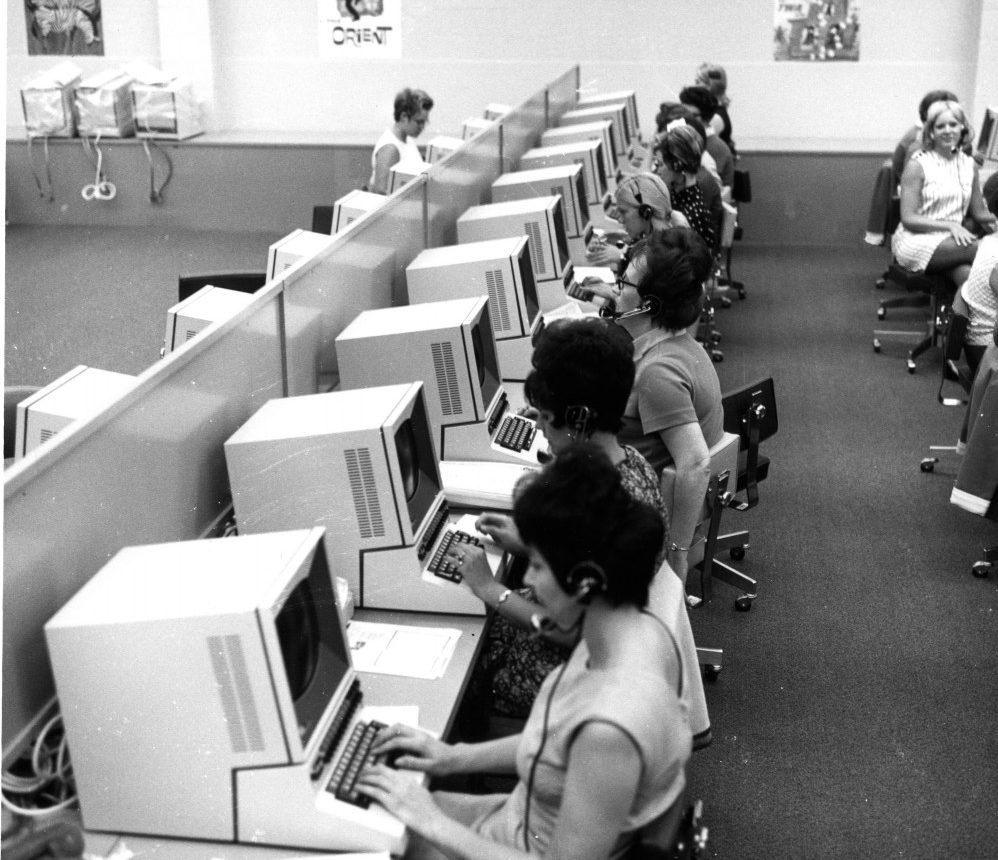
During this time period, computing continued to evolve with advancements primarily in hardware and networking:
- Mainframes and Mini-Computers: Mainframes remained a dominant computing platform during the 1970s, but mini-computers started gaining popularity. Mini computers were smaller and more affordable than mainframes, making them accessible to a broader range of organizations.
- Time-Sharing Systems: Time-sharing systems continued to be refined during this period. These systems allowed multiple users to interact with a computer simultaneously by dividing processing time among them. This marked a departure from the batch processing model and contributed to more interactive computing.
- Emergence of Microprocessors: We witnessed the emergence of microprocessors, leading to the development of personal computers. This shift brought computing power to individuals and small businesses, further decentralizing computing.
- Client-Server Architecture: The client-server architecture started to gain prominence in the 1980s. This model distributed computing tasks between Clients and Servers. It laid the groundwork for more distributed and collaborative computing environments.
- Networking Advances: Local Area Networks (LANs) became more prevalent, allowing computers within a limited geographic area to be connected. This facilitated better communication and resource sharing among connected systems. The development of TCP/IP networking protocol during this time contributed to the growth of networking capabilities.
1990s –
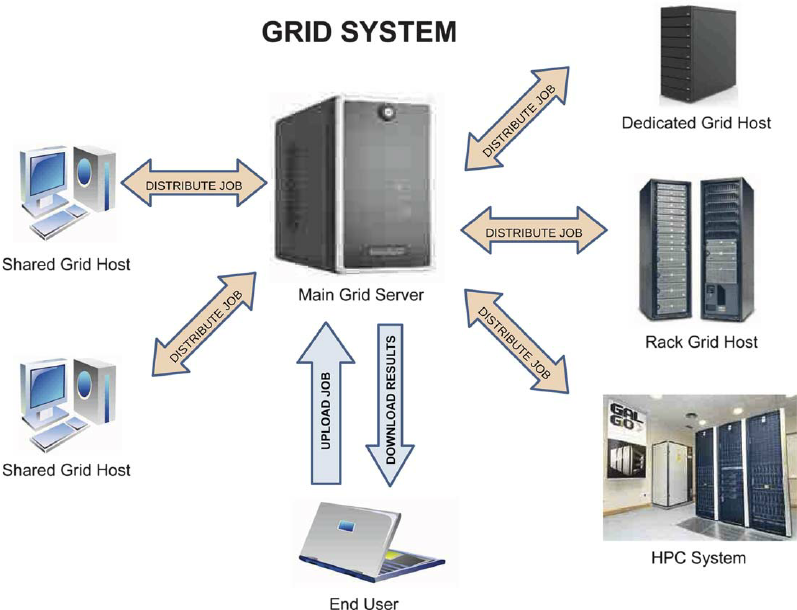
The development during the 1990s laid the foundation for cloud computing concepts:
- Internet Growth: The 1990s saw the rapid expansion of the internet. The World Wide Web became publicly accessible, and web browsers like Netscape Navigator allowed users to navigate and interact with online content. The Internet became a platform for information exchange and collaboration.
- Application Service Providers (ASPs): The concept of Application Service Providers (ASPs) emerged during this period. ASPs provided access to business applications and services over the internet, allowing users to subscribe to software on a subscription basis rather than installing it locally. This can be considered a precursor to the Software as a Service (SaaS) model in cloud computing.
- Grid Computing: Grid computing, a distributed computing model that involved pooling resources from multiple networks to solve complex problems, gained traction. While not directly related to cloud computing, the principles of resource sharing and collaboration in grid computing contributed to later cloud concepts.
- Virtualization Technologies: Virtualization technologies started to emerge, allowing multiple virtual machines to run on a single physical server. This marked a step toward more efficient use of computing resources.
2000s –
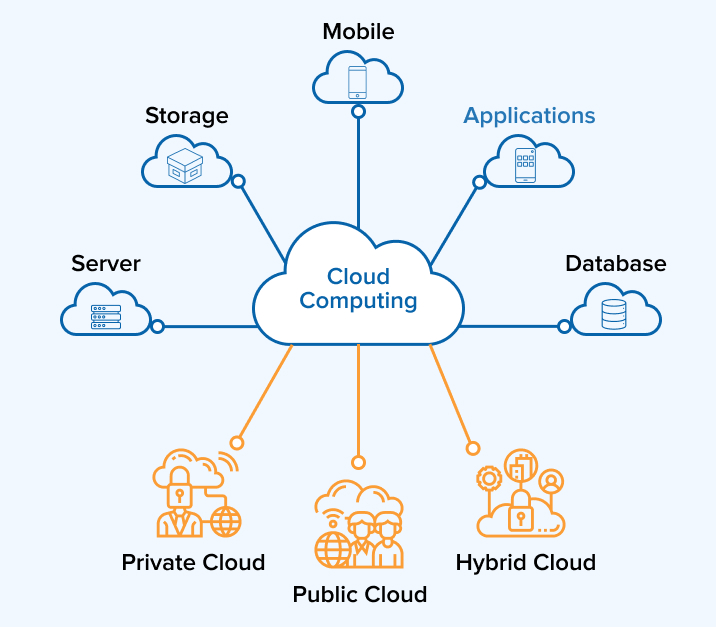
Cloud Computing as a concept emerged in the 2000s. It marked as a transformative period for computing:
- Adoption by Enterprises: Enterprises began to embrace cloud computing for its scalability, flexibility, and cost-effectiveness. The ability to scale resources up or down based on demand and the shift from capital expenditures to operational expenditures were key drivers of cloud adoption.
- Development of Platform as a Service (PaaS) and Software as a Service (SaaS): The 2000s saw the expansion of cloud service models. Alongside Infrastructure as a Service (IaaS), the PaaS model, which provides a platform for developers to build and deploy applications without managing the underlying infrastructure, gained traction. Additionally, Software as a Service (SaaS) offerings, where applications are delivered over the Internet, have become more prevalent.
- Cloud services: Beginning with Amazon AWS(Amazon Web Services), and following with Google Cloud Platform(GCP) and Microsoft Azure Cloud, these platforms helped in shaping and advancing the cloud computing industry.
- Evolving Security and Compliance Standards: As cloud adoption increased, there was a growing emphasis on addressing security and compliance concerns. Cloud service providers implemented robust security measures, and industry standards and certifications were developed to establish best practices.
- OpenStack and Cloud Standards: OpenStack, an open-source cloud computing platform, was launched in 2010. It aimed to provide standardization in cloud computing and enable organizations to build and manage public and private clouds.
2010s –

During this decade, cloud computing became a mainstream IT paradigm, transforming how businesses and individuals approached technology infrastructure, application development, and data management.
- Diverse Cloud Service Offerings: Cloud service providers, including Amazon Web Services (AWS), Microsoft Azure, and Google Cloud Platform (GCP), expanded their service portfolios. This included a wide array of Infrastructure as a Service (IaaS), Platform as a Service (PaaS), and Software as a Service (SaaS) offerings.
- Serverless Computing and Architectures: Serverless computing gained prominence. It allowed developers to build and run applications without managing the underlying infrastructure. AWS Lambda, Azure Functions, and Google Cloud Functions were key serverless platforms that enabled event-driven, scalable architectures. Serverless architectures, where applications are built using functions that automatically scale based on demand, gained popularity. This approach simplified deployment and reduced infrastructure management overhead.
- Containers: Containers and containerization platforms, like Docker and Kubernetes, became foundational to cloud-native development. Containerization facilitated consistency across different environments and improved resource utilization.
- Hybrid and Multi-Cloud Strategies: Businesses adopted hybrid cloud and multi-cloud strategies, combining on-premises infrastructure with public and private cloud services. This approach provided flexibility, redundancy, and the ability to leverage the strengths of different cloud providers.
- Artificial Intelligence (AI) and Machine Learning (ML): Cloud providers integrated AI and ML services into their offerings. This allowed businesses to leverage pre-built models and tools for tasks such as image recognition, natural language processing, and predictive analytics.
- Security and Compliance Focus: Cloud providers enhanced security features, and industry standards and certifications became more established. Focus on compliance with regulations such as GDPR increased, addressing concerns around data protection and privacy.
- DevOps and Continuous Integration/Continuous Deployment: DevOps practices, emphasizing collaboration between development and operations teams, became integral to cloud development. CI/CD pipelines were widely adopted, allowing for automated testing and deployment of applications.
- Open Source Contributions: Open source continued to play a vital role in cloud computing. Projects like Kubernetes, Prometheus, and Istio, hosted by the Cloud Native Computing Foundation, became the standard tools for container orchestration, monitoring, and service mesh.
- Evolution of Data Management: Big Data and analytics services evolved, allowing organizations to process and derive insights from large datasets. Cloud-based data lakes and warehouses became essential components of modern data architectures.
2020s and Future –

Due to the COVID-19 pandemic in 2020, every organization adopted cloud adoptions at an accelerated rate. Cloud services provide the necessary infrastructure and tools to support remote collaboration and business continuity. The outlook for this decade and the future are:
- Edge Computing Expansion: Due to increasing demand for low-latency applications in areas such as IoT, augmented reality (AR), and autonomous systems, the integration of edge computing is expected to deepen, enabling processing closer to the data source.
- Increased Integration of AI and ML: Continuation of Integration of artificial intelligence (AI) and machine learning (ML) services into various cloud offerings.
- Enhanced Hybrid and Multi-Cloud Management: Solutions for managing hybrid and multi-cloud environments will become more sophisticated. Tools that provide visibility, governance, and seamless management across diverse cloud infrastructures are expected to evolve.
- Sustainability and Green Computing: Efforts to use renewable energy sources, optimize data center efficiency, and reduce carbon footprints are expected to continue.
- Advancements in Quantum Computing: Research and Experimentation with quantum computing are likely to continue, and cloud providers may offer more accessible quantum computing resources for developers and researchers.


